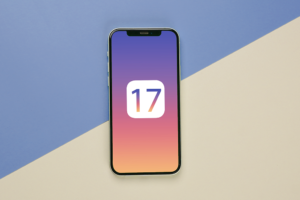If you are serious about optimizing your SubjectLines, you should start by accurately measuring and fully understanding the true nature of the contribution your email campaigns make to the mix.
Timing is Everything
When do you stop counting opens or clicks generated by the email? Do you stop attributing after a day, week, or when the next email goes out? Even straight forward and measurable actions like opens and clicks come with a catch. Open Later, Click Later, or Buy Later: which begs the question:How late is later?
The chart below is from an attribution audit conducted by Alchemy Worx for a large retailer. We analyzed every campaign sent over a 3-month period with no cut off for email attribution and compared it with a 7-day cutoff – the existing attribution model being used.

We found under the 7-day model, 95% of the final total for Opens and 96% of total for Clicks had occurred, but crucially only51% of revenue generated by those emails got accounted for. The remaining 49%of the revenue eventually generated by the email sent during the period did NOT get attributed to email!
To better understand what was going on we focused our attention on sales. Both lines on the chart below represent average daily sales attributed to their campaigns. The darker line represents average sales per day post deployment and the lighter line represents average sales per day from last click. The difference is startling.
While 20.76% of sales happen within a day of the email being deployed, 45.48% of sales happen within a day of the last click.This attribution gap highlighted by the red arrow is caused by people clicking and, in some cases, opening an email a day or more after it was sent. If that doesn’t get your attention, then consider this: around 25% of sales came 21days or more after the email was sent.

Optimizing Subject Lines and the Halo Effect
In order to truly optimize your Subject Line you need to measure and understand its impact even when there was no open or click. This is something we call – the halo effect.
It is important to understand the most common attribution models that email marketers use to define how sales and conversion are determined. Typically, the following three measurement criteria are considered:
Type of action – opens, clicks or conversion.
Time frame – do you cut off after days, weeks, or months from send.
Touch – first touch, last touch, or any touch.
Most email marketers will choose some combination of the three depending on what works best for their business, typically in relation to its sales cycle, but the popular approach is to focus on tracking conversions via last click.
However, the truth is a click doesn’t necessarily tell a marketer anything. Not everyone that clicks through from an email will go further and make an immediate purchase. It also doesn’t account for the likelihood the clicker might go on to purchase via another channel later. Clearly, there is value to a Subject Line that is not being taken into consideration if you just focus on clicks or opens. The question then becomes, how can we measure this?
One approach is to run an analysis of revenue from all channels as a starting point. Deduct the email specific revenue as you currently attribute it (opens and clicks, first or last touch) and break down this new number into days when emails to the majority of your list were and were not sent out.
We have done this for several of clients. The results consistently show the average daily revenue on days in which email was sent to more than 30% of the list was higher for the non-email channels too. We then looked at the source of the lift in revenue, where the lift was most marked based on last touch and first touch. Email had an impact on every other channel search, both natural and paid, affiliate programs, even social.
What does all this mean to email attribution?
Essentially, our main conclusion was that email Subject Lines are absolutely driving sales in other channels and this is one way to prove it. That said, marketers should be cautious about defining email and the halo effect too broadly and over stating the revenue generated by email or defining it too narrowly and underestimating. However, if marketers find the right balance and look at email as part of the bigger picture, they’ll discover that it can work in a capacity similar to broadcast and drive additional revenue in other channels.
All of which brings us back to the importance of attribution models. If email Subject Lines are driving sales in other channels on and offline, then marketers need to consider that fact and look for a model that takes this into account. If marketers can look beyond simple click-based attribution, and make sure they are tracking and analyzing sales holistically both online and offline, they will find demonstrating the true value of their email marketing and getting additional funding for testing will become much easier.





